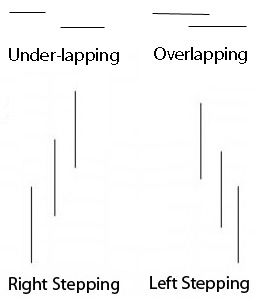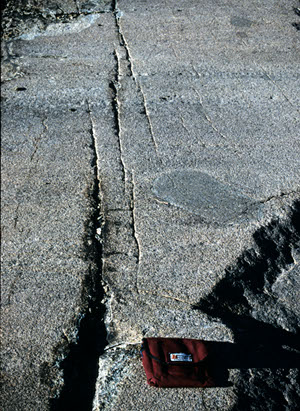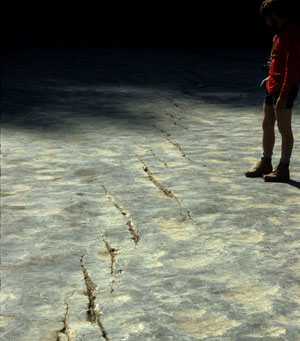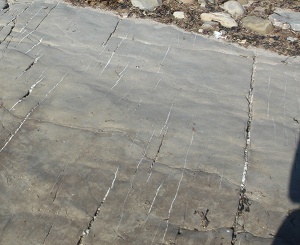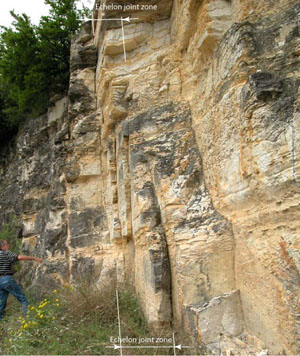| |||||||||||||||
|
|
|||||||||||||||
|
|
|||||||||||||||
| Echelon Joints | |||||||||||||||
|
En echelon or in abbreviated form in this knowledgebase, 'echelon' joints, are closely spaced sub-parallel joints arranged in echelon pattern. Members or segments in echelon geometry can be under-lapping and over-lapping (top row of Figure 1) or right-stepping and left-stepping (bottom row of Figure 1).
For example, the photographs in Figure 2 and Figure 3 illustrate echelon joint trace geometries on a glaciated surface of granodioritic rock and on a limestone pavement, respectively, both generally in a right-stepping configuration.
More complex geometric arrangements occur in joint zones with a large number of individual members as illustrated in Figure 4 which is a map view of at least three sub zones with different geometric properties on a sandstone pavement. Figure 5 which is a three dimensional view of a complex zone in limestone exposed in a road cut.
| |||||||||||||||
| Reference: |
|||||||||||||||
| Pollard, D.D., Aydin, A., 1988 Wilson, C., Aydin, A., Karimi-Fard, M., Durlofsky, L.J., Sagy, A., Brodsky, E.E., Kreylos, O., 2008 |
|||||||||||||||
|
Readme | About Us | Acknowledgement | How to Cite | Terms of Use | Ⓒ Rock Fracture Knowledgebase |
|||||||||||||||
